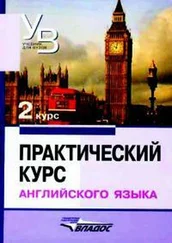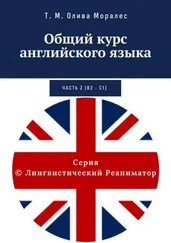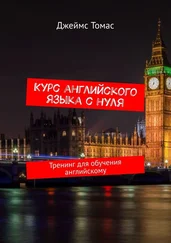is the chair? 10. Where are the pens?
C. 1. Is Dr. Sandford's family large? 2. Has he a wife? 3. What is her
name? 4. Has she a sister? 5. Has Dr. Sandford a father? 6. Has he a mother?
7. Has Dr. Sandford a daughter? 8. Has he a son? 9. What is his name? 10. So
how many people are there in Dr. Sandford's family? 11. How old is Dr.
Sandford? 12. How old is Helen? 13. How old is Mrs. Sandford? 14. How
many cousins has Benny? 15. Whose children are Georgie and May? 16.
Where are Benny's cousins?
VIII. a) Write sentences using there is, there are and the words given
below:
1. bus, street; 2. lamp, room; 3. chalk, blackboard; 4. bread, table; 5. tea,
tea-pot; 6. coffee, coffee-pot; 7. money, bag; 8. paper, box; 9. soap, shelf; 10.
water, jug.
b) Make up micro-dialogues with the same sentences.
IX. Fill in prepositions:
1. Don't be late. Come ... nine o'clock. 2. What time is it now? It is half ...
six. 3. We are going to leave ... a quarter ... ten. 4. It is twelve o'clock now.
Come here in ten minutes, ten minutes ... twelve. 5. Is it a quarter ... three? In
a quarter of an hour, ... three o'clock we must be ... the University. 6. He must
work ... seven ... eleven o'clock. 7. They live ... the North ... our country.
X. a) Rewrite the following in the plural:
1. There is a sentence on the blackboard. 2. Is there a desk in the room? 3.
There is not any book on the table. 4. Is there a dictionary on the chair? 5.
There is a match in the box. 6. There is a girl in the picture. 7. There is no
child in their family.
b) Change the sentences using the construction given in Table No. 2 on page 87.
87
XI.
a) Write the interrogative and negative forms of the following
sentences:
1. There is a telegram on the table. 2. There is a cinema near our house. 3.
There are many mistakes in his dictation. 4. There js much paper in his bag. 5.
There are two sofas in the room, i. There are a lot of children in the park
today.
b) Express your surprise asking questions as in the model. Note the
listribution of sentence stress in the replies.
yl о d e 1: There is a dog in the room.
,1s there? Is there -> really a ,dog in the room? I say there vis.
c) Respond to the same statement in the negative.
Л о d e 1: There is a dog in the room.
Oh, no. There is vno dog there.
Are you sure?
Quite.
XII.
The following statements are not true to fact. Correct them.
M o d e l : Doctor Sandford's family is large. No,
that's wrong. It's not large.
1. Doctor Sandford has two sons and one daughter. 2. There are seven
people in Doctor Sandford's family. 3. Doctor Sandford is eighty. 4. There are
many girls and boys for Benny to play with. 5. Benny has no cousins. 6.
Benny's cousins are in Africa. 7. Benny's cousins are schoolchildren.
XIII.
Describe Doctor Sandford's family as if you were Doctor Sandford, his
wife or Benny.
XIV.
Work in pairs. Ask your fellow-student logical questions on the given
statements and answer them.
M o d e l : There are two tables in the room. What's
there in the room? (There are) some tables. How many
(tables are there in it) ? (There are) two.
1. There is a green notebookon the desk. 2. There is littlemilk in the
bottle. 3. The Browns have a very largefamily.
4. My parents are at home.5. Benny's cousinsare in the
North of America.
XV.
a) Make questions beginning with What ... and How many ... and answer
them.
88
M o d e l 1: What is there in your street?
M o d e l 2: How many high buildings are there in your street?
1. There are two tables in the room. 2. There are eight notebooks in her
bag. 3. There are ninety-five students in the hall. 4. There is a clock on the
desk. 5. There are twelve cassette-recorders in the laboratory. 6. There are six
sentences in this exercise.
b) Make your own questions on the same models and answer them.
XVI.
a) Make questions beginning with How much ... and answer them.
M o d e l : How much milk is there in the jug?
1. There is a lot of coffee in the coffee-pot. 2. There is a little water in the
glass. 3. There is too much salt in the soup. 4. There is little money in the bag.
5. There is a lot of tea in the tea-pot. 6. There is not much butter on the plate.
b) Make your own questions on the same model and answer them.
XVII.
Translate the following sentences into English:
A. 1. На стене картина. На стене часы. На стене классная доска. На
столе картофель. На столе книги. В кувшине молоко. На тарелке масло.
На столе соль. На доске (написано) предложение. 2. Картина на стене.
Часы на стене. Классная доска на стене. Коробки на столе. Портфели на
столе. Книги на столе. Молоко в кувшине. Масло на тарелке. Соль на
столе. Предложение (написано) на доске. 3. На столе лампа. Лампа на
столе. На столе газеты. Газеты на столе. На улице автомобиль.
Автомобиль на улице. У стены диван. Диван у стены. В коробке
карандаши. Карандаши в коробке. 4. На стуле нет книги. Книга не на
стуле. На стуле нет шляпы. Шляпа не на стуле. На стуле нет тетради.
Тетрадь не на стуле. В коробке нет авторучки. Авторучка не в коробке. В
сумке нет денег. Деньги не в сумке. 5. В портфеле не три книги, а четыре.
В портфеле не пять карандашей, а шесть. В портфеле не две ручки, а
одна. 6. Как раз пора обедать. Как раз пора пить чай.
B. 1. Это моя комната. Посредине комнаты стоит стол. На столе
кувшин. В кувшине молоко. На тарелке масло. 2. Пусть Бенни
садится за стол. Как раз пора завтракать. Молоко в кувшине. Масло
на тарелке. Нож около тарелки. Где хлеб? Хлеб в буфете (sideboard). 3.
Где журнал? На столе нет журнала. Журнал не на столе, а на стуле. 4. В
коробке нет авторучки. Авторучка не в коробке, а в столе. 5. Где деньги?
В сумке нет денег. Твои деньги не в сумке. Они на столе. 6. В твоем
Читать дальше

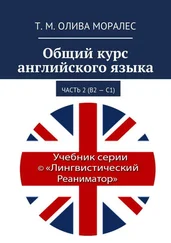

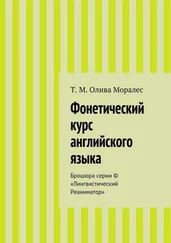
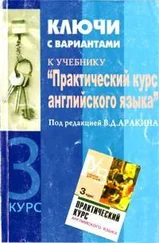
![Владимир Аракин - Практический курс английского языка 3 курс [calibre 2.43.0]](/books/402486/vladimir-arakin-prakticheskij-kurs-anglijskogo-yazyk-thumb.webp)

